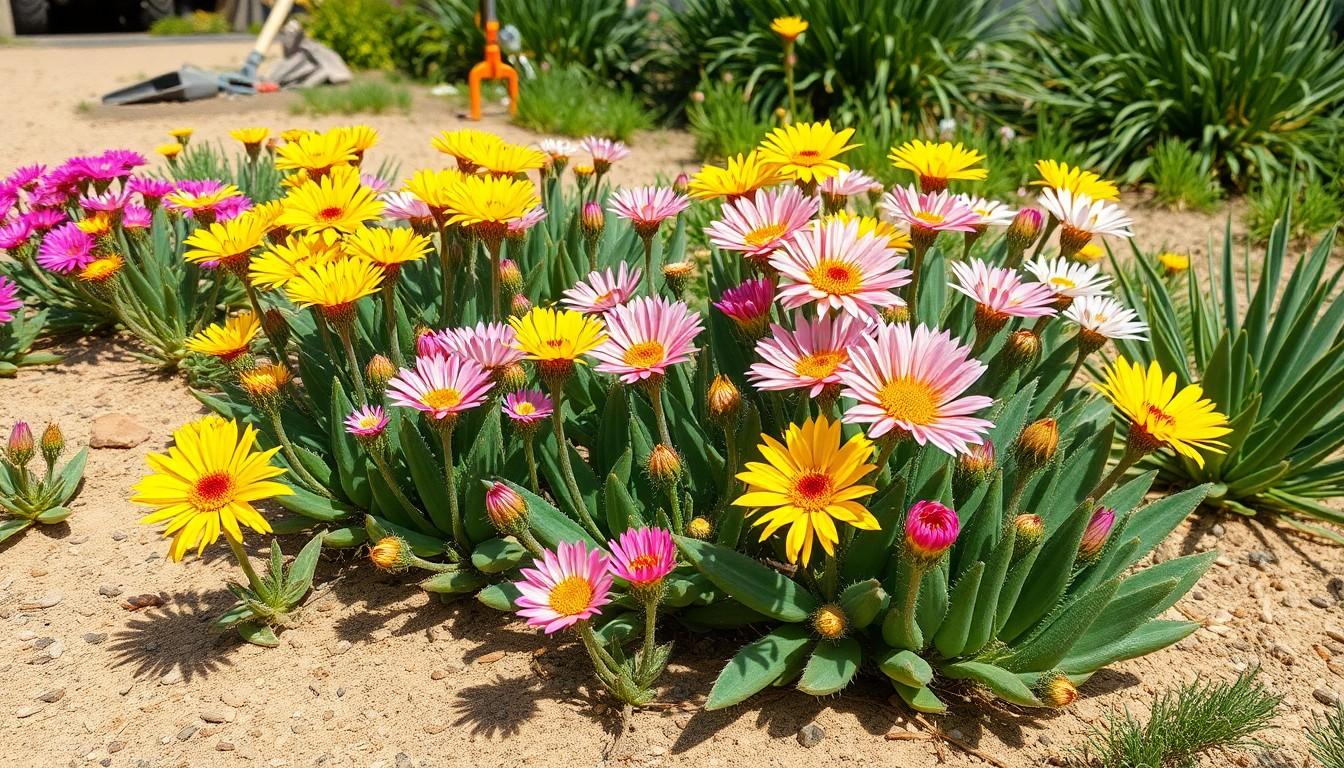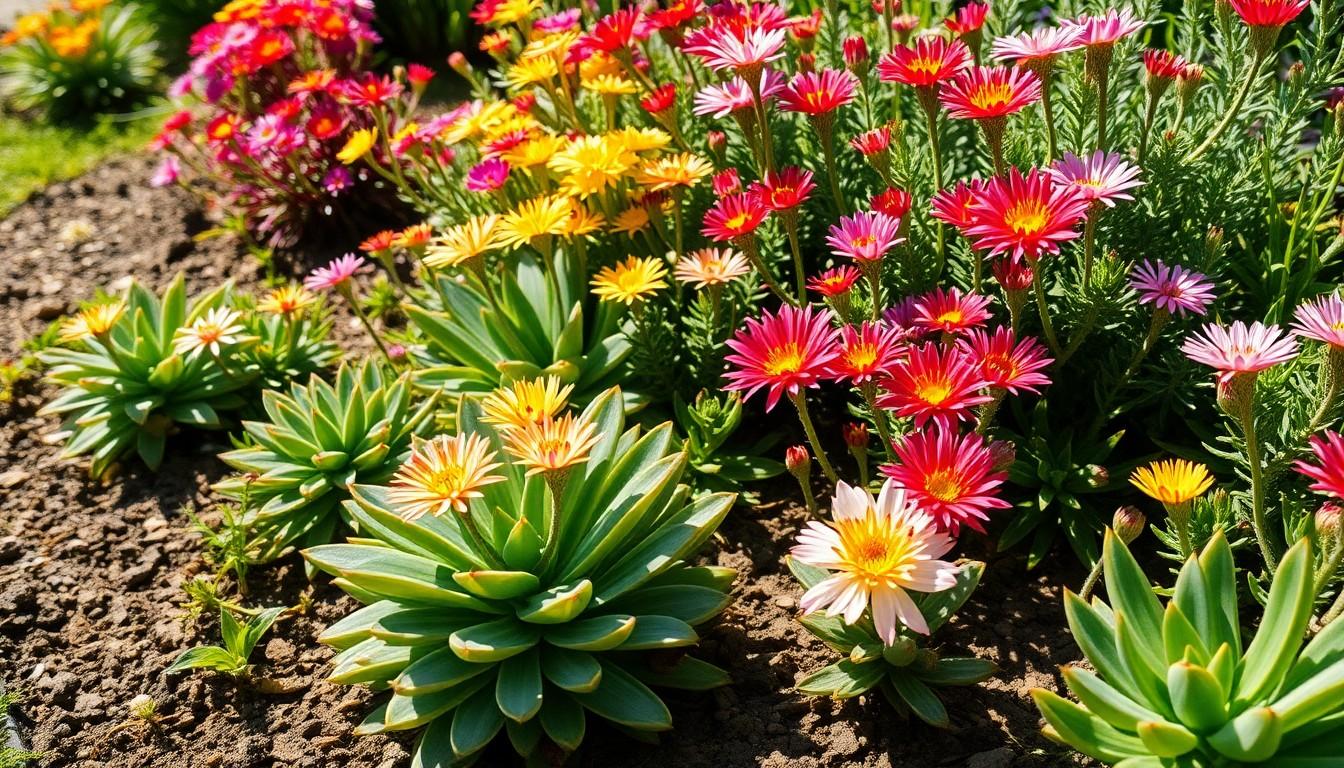Phone:
(701)814-6992
Physical address:
6296 Donnelly Plaza
Ratkeville, Bahamas.

If you’re looking to add a splash of color to your garden without breaking a sweat, ice plants are your new best friends. These hardy little succulents thrive in the sun and practically laugh in the face of drought. With their vibrant blooms and quirky, fleshy leaves, they’re not just low-maintenance; they’re also a conversation starter. Who wouldn’t want to brag about their “ice” collection?
Ice plants, known for their vibrant colors, thrive in gardens and are excellent for low-maintenance landscapes. These succulents offer unique visual appeal along with their easy-care nature.
Ice plants, part of the Aizoaceae family, originate from southern Africa. Species such as Delosperma and Lampranthus display fleshy leaves and colorful flowers, often blooming from spring through fall. Adaptation to arid climates makes these plants drought-tolerant and efficient at water retention. Variety exists in different types, showcasing various leaf shapes and flower hues, enriching garden diversity.
Ice plants contribute numerous advantages to gardening. Their low water requirements reduce the frequency of irrigation, saving time and resources. Most varieties attract pollinators, supporting local ecosystems. These resilient plants can thrive in poor soils, offering a natural solution for challenging garden areas. Blooming continuously throughout the growing season, they provide ongoing visual interest. Easy propagation allows gardeners to expand their collection effortlessly.

Ice plants thrive in bright conditions, making them an excellent choice for sunny gardens. Proper care ensures vibrant blooms and healthy growth.
Bright sunlight benefits ice plants significantly, so placing them in full sun promotes optimal flowering. A minimum of six hours of direct sunlight each day encourages vigorous growth and a profusion of colorful blooms. Although they can tolerate partial shade, reduced sunlight might diminish flower production. Gardeners should avoid fully shaded locations to maintain the health of their ice plants.
Well-draining soil is crucial for ice plants, as they prefer sandy or gritty media that won’t retain excess moisture. Soil pH between 6.0 and 8.0 supports healthy growth. Watering should be infrequent, allowing the top few inches of soil to dry out completely between sessions. Most ice plants thrive with occasional deep watering during dry spells. Overwatering can lead to root rot, so ensuring they receive the right balance of moisture is essential.
Ice plants feature various attractive species, each with unique characteristics. Selecting the right variety enhances a garden’s appeal and ensures successful growth.
Delosperma cooperi stands out for its vibrant yellow and purple flowers. Lampranthus spectabilis showcases striking pink blooms that attract pollinators. Another noteworthy option is Delosperma nubigenum, known for its bright yellow flowers and spreading habit. Mesembryanthemum crystallinum, or “ice plant,” offers a unique texture and silvery leaves. These varieties not only add color but also require minimal care.
Choosing the right ice plant depends on specific site conditions. Consider sunlight availability; some varieties may thrive in spaces with full sun. Evaluate the soil type, as well-draining sandy soil benefits all species. Determine the intended use; ground cover options like Delosperma are ideal for filling empty spaces. Assess local climate conditions to ensure selected varieties will flourish efficiently. By considering these factors, gardeners can create a stunning display with ice plants.
Ice plants can encounter several issues that affect their health and appearance. Understanding these common problems helps improve care and maintain their vibrant look.
Overwatering often leads to root rot, causing leaves to yellow and wilt. To remedy this, allow the soil to dry out completely between waterings. Poor drainage may also cause issues; use a well-draining soil mix to prevent water accumulation. Pests like aphids or mealybugs can appear, presenting sticky residue on leaves. Treat infestations quickly with insecticidal soap. Leaf discoloration might indicate insufficient light; ensure the plants receive at least six hours of direct sunlight daily.
To prevent issues, select the right soil mix that promotes drainage. Sandy or gritty soil works well for ice plants. Regularly inspect plants for pests to catch problems early; vigilance ensures health and vitality. Sunlight is crucial; placing plants in full sun supports strong growth and flowering. Maintain a consistent watering schedule that allows soil to dry out completely before the next session. Adequate spacing between plants prevents overcrowding and encourages airflow, reducing the risk of disease.
Ice plants are a fantastic addition to any garden thanks to their vibrant colors and low-maintenance nature. With proper care they can thrive in various conditions while providing continuous blooms that attract pollinators. By ensuring they receive adequate sunlight and well-draining soil gardeners can enjoy the unique beauty these succulents offer.
Whether selecting popular varieties or experimenting with lesser-known species ice plants can enhance both aesthetics and biodiversity in outdoor spaces. With a little attention to their specific needs these resilient plants can flourish and bring joy throughout the growing season. Embracing ice plant care is a rewarding choice for any gardening enthusiast.